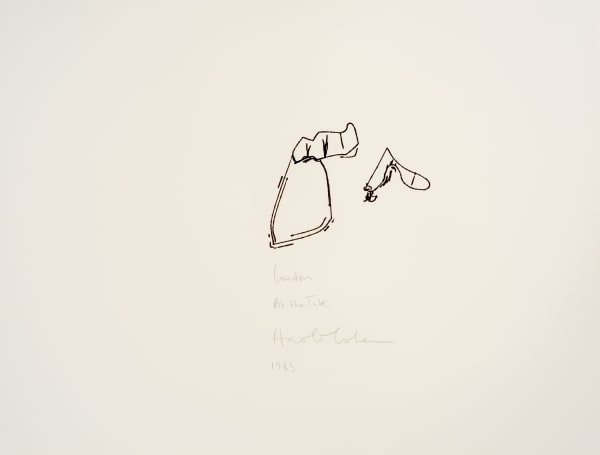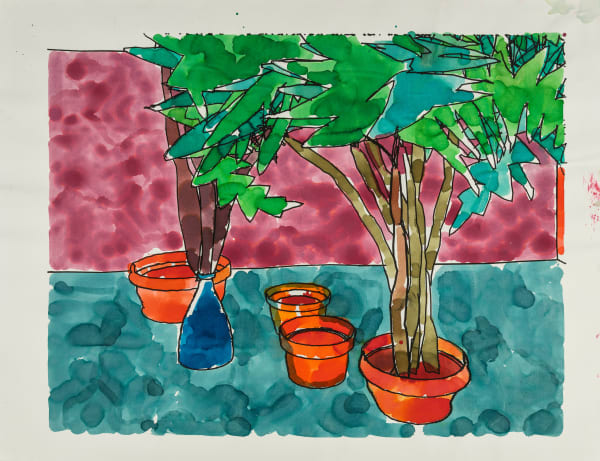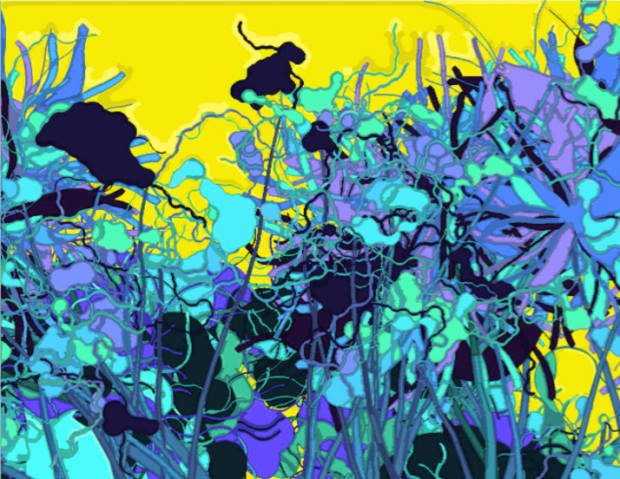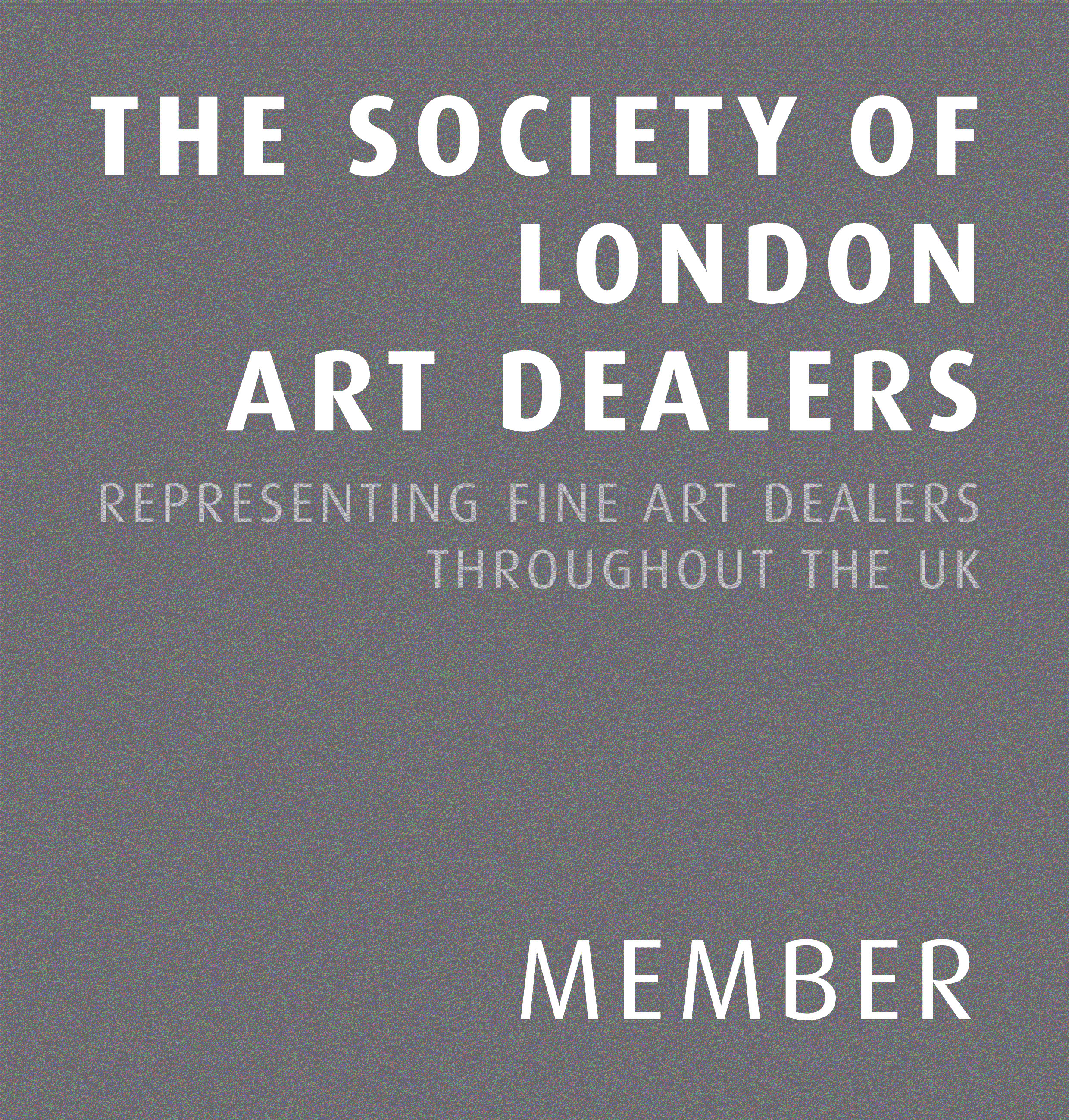Gazelli Art House returns to Frieze Masters this October with a curated selection of drawings and paintings by Harold Cohen (1928—2016). One of the first artists to explore artificial intelligence both as a concept and a tool for creating art, Cohen, since the late sixties, developed his own pioneering system which he named AARON. This presentation will display Cohen’s original Drawing Machine (Desk) (1980) alongside a screen-based display of the revived code, extending his legacy into the present. Echoing the Whitney Museum’s landmark exhibition Harold Cohen: AARON (2024), which reintroduced live plotting to museum audiences for the first time since the 1990s, the installation underscores both the historical importance and contemporary resonance of Cohen’s pioneering programme.
-
-
The works on display emphasise continuity across Cohen’s practice — from his early abstract canvases of the 1960s, to his 1990s works such as the Painting Machine series (1995—2000), revealing a lifelong exploration of rules, systems, and perception in the creative process. This trajectory underscores Cohen’s dual legacy as both a painter and a pioneer of computer art, situating his practice within the history of post-war British painting while tracing its role in the emergence of generative art.
-
 Harold Cohen, Outward, 1966
Harold Cohen, Outward, 1966
-
The style used in Outward differs from Cohen’s previous paintings by way of the speckled coloured ground. Thrown on whilst the painting was laid flat, the speckled ground was motivated by a desire to emphasise the cohesiveness of the painting, where the work is ‘determined from the first mark.’ Describing a migration towards a painting process whereby the work ‘paints itself ’, Cohen’s introduction of rules signified a relinquishing of the decisive capabilities of the artist. Destabilising his own artistic autonomy, this period foretells Cohen’s creation of AARON, his artificially intelligent drawing machine.
-
Untitled (i23-3556) is an example of the second series of computer art works Harold Cohen produced, but they are also considered the first plotted works and were called the ‘Numbered Fields’. Executed at a time when computer art was in its infancy, the work captures a foundational moment in digital aesthetics, where the subtle visual modulations and repetitions guide the viewer’s gaze and reveal an underlying compositional sensitivity. An example of similar work can also be found in the Victoria & Albert Museum Collection.
-
The Maze works use an algorithmically generated line, or what Cohen referred to in early texts as the ‘freehand line generator’/’wandering line’, and later known as the freehand line algorithm. While visually the line may appear to wander or wiggle, the construction of the composition was deeply intentional, in an effort to convey the presence of an intelligent, decision making force through a line that resists mechanical rigidity and character. The partitioning of the space on the picture plane was done in such a way as to never enclose any part of it, so that every part of the field may be reached from any other part without crossing a line. This constraint programmed into the system, creates compositions that are complex and suggestive of organic growth or cognitive mapping. These works marked a foundational moment in AARON’s development, as the algorithm was used by Cohen throughout the rest of his practice.
-
-
 Harold Cohen, Untitled (i23-3934), 1973-1974
Harold Cohen, Untitled (i23-3934), 1973-1974 -
 Harold Cohen, Untitled (i23-3923), 1977-1982
Harold Cohen, Untitled (i23-3923), 1977-1982 -
 Harold Cohen, Untitled (i23-3912), 1982
Harold Cohen, Untitled (i23-3912), 1982 -
-
Dating to 1983, London at the Tate (1983) unique work was generated and drawn by AARON during an exhibition of Harold Cohen’s work at the Tate in London. Following displays at the De Cordova Museum Lincoln, Massachusetts in 1982, and The Brooklyn Museum in 1983, the Tate marked the third tour stop for Cohen’s Drawing Machine, a custom hardware designed to plot works generated by AARON directly from the computer. After its demonstration in London, AARON journeyed to the Arnolfini in Bristol. These series showcased the further development of “Rock” formations, exhibiting additional characteristics of shading and relational composition. The minimalist formation present in this particular work suggests that it might have been at the start or the end of the run of the Drawing Machine.
-
Using AARON, Cohen algorithmically prompted the generation of forms in a sophisticated space, resulting in dramatically positioned figures stepping out of a complex jungle environment. The plants are generated from a number of rules about morphology in terms of branching level, clustering patterns in leaf formations, and plant size. The energy and rhythm of the composition demonstrate Cohen’s continued exploration of how AI could emulate and innovate artistic expression. An example of this series can be found in the collection of the Victoria & Albert Museum.
-
Created just two years apart, Untitled Portrait (1993) and Machine Painting Series TCM #7 (1995) demonstrate Cohen’s developing working relationship with AARON. These two works evidence the sophistication of AARON at this time, when, during the early 1990s, the programme was able to generate advanced portraits and compositions and interpret colour independently.
The Machine Painting Series TCM #7 belongs to AARON’S Painting Machine era - an example of a fully machine-made work. AARON generated and executed the drawing and applied the colour to the paper unaided via the use of custom hardware built by Cohen. Amongst the many portraits created at the time, this still-life inspired composition is one of the rarer outputs from the series and anticipates AARON’s evolving approach to rendering natural forms. It depicts a compelling arrangement of potted plants demonstrating the start of Cohen attempting to add depth and perspective to AARON’s compositions. Space is rendered precisely, positioning the object convincingly in an interior environment. Creating numerous iterations of potted plants over the following decade, the programme would experiment with arrangement, from tables and tiled floors to their eventual liberation from pots altogether in the mid-2000s.
-
 Harold Cohen, 040502 (i23-3377), 1982
Harold Cohen, 040502 (i23-3377), 1982 -
 Harold Cohen, Under Waterfront Park, 2014
Harold Cohen, Under Waterfront Park, 2014 -
Right up until his passing in 2016, Cohen remained deeply rooted in the traditions of abstraction and saw machines as an extrinsic force. Throughout his career his experiments with how line, shape, and colour can be co-authored remained consistent pushing the visual and technological characteristics of his work.
-

-

-




















